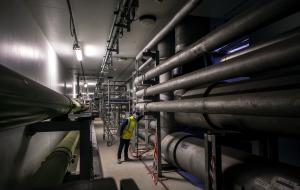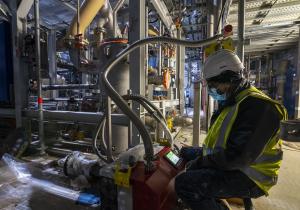The cryoline network is built out of individual spools that measure up to 10 metres in length and range from 25 to 1000 millimetres in diameter. A section of cryoline can host up to six or seven "process pipes," each devoted to a specific fluid, flow direction or function. The Indian Domestic Agency, responsible for 100 percent of cryoline procurement, is working with two companies—France's Air Liquide and India's
INOXCVA. The Indian firm is providing the totality of the piping inside the cryoplant.
One of the first and most obvious requirements for the cryoline network is to be perfectly leak tight. After more than a full year of work, an important milestone was passed last week as all 4.8 kilometres of cryolines and "warm lines" inside the cryoplant were successfully leak tested by the INOXCVA team operating under the responsibility of ITER India.



